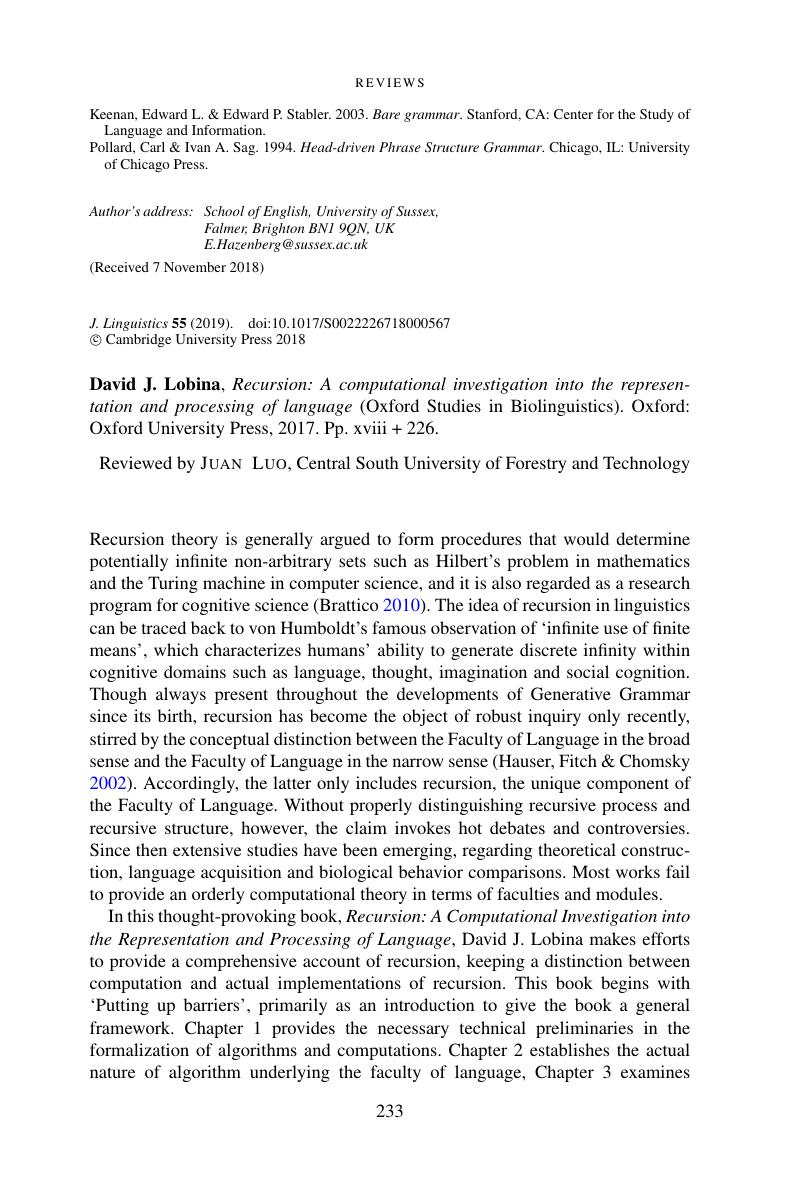No CrossRef data available.
Article contents
David J. Lobina, Recursion: A computational investigation into the representation and processing of language (Oxford Studies in Biolinguistics). Oxford: Oxford University Press, 2017. Pp. xviii + 226.
Review products
David J. Lobina, Recursion: A computational investigation into the representation and processing of language (Oxford Studies in Biolinguistics). Oxford: Oxford University Press, 2017. Pp. xviii + 226.
Published online by Cambridge University Press: 21 December 2018
Abstract
An abstract is not available for this content so a preview has been provided. Please use the Get access link above for information on how to access this content.

- Type
- Reviews
- Information
- Copyright
- Copyright © Cambridge University Press 2018
References
Boeckx, Cedric. 2015. Elementary syntactic structure: Prospects of feature-free syntax. Cambridge: Cambridge University Press.Google Scholar
Brattico, Pauli. 2010. Recursion hypothesis considered as a research program for cognitive science. Minds and Machines
20, 213–241.Google Scholar
Fitch, W. Tecumseh & Hauser, Marc D.. 2004. Computational constraints on syntactic processing in nonhuman primates. Science
303, 377–380.Google Scholar
Hauser, Marc D., Chomsky, Noam & Fitch, W. Tecumseh. 2002. The faculty of language: What is it, who has it, and how does it evolve?
Science
298, 1569–1579.Google Scholar
Marr, David. 1982. Vision: A computational investigation into the human representation and processing of visual information. San Francisco, CA: W. H. Feeman and Company.Google Scholar
Simon, Herbert A.
1962. The architecture of complexity. Proceedings of the American Philosophical Society
106, 467–482.Google Scholar


